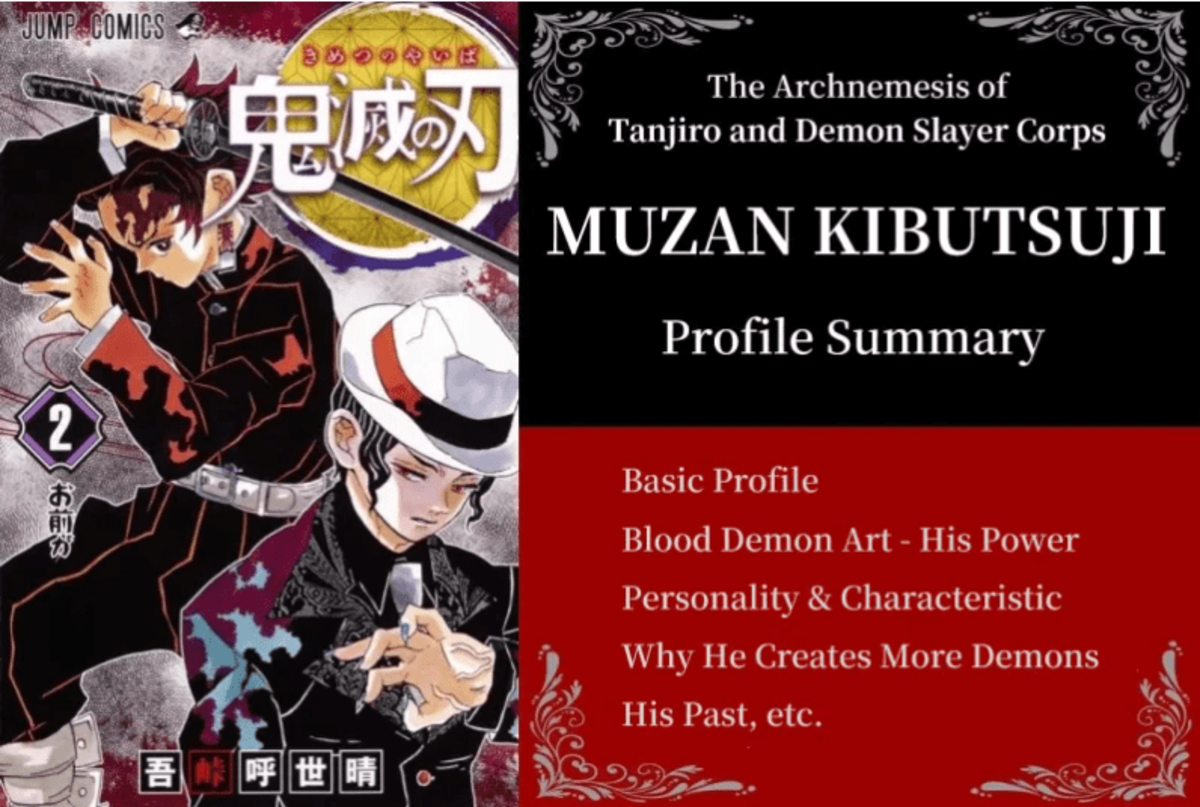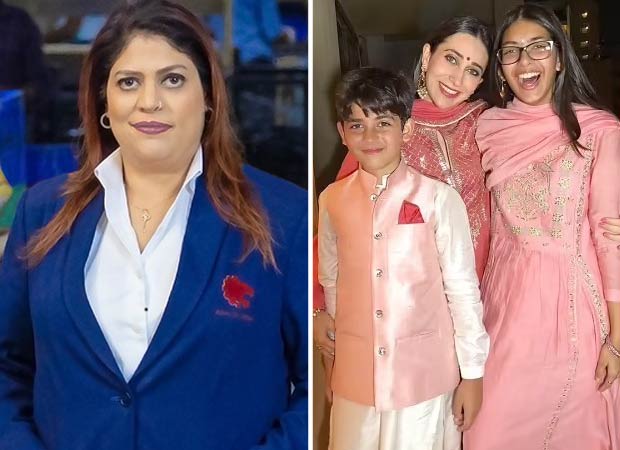“Demon Slayer: Kimetsu no Yaiba” – A Comprehensive Guide to The Progenitor of All Demons, Muzan Kibutsuji!
By Watanabe Mikiko
Copyright kyodonews

“Demon Slayer: Kimetsu no Yaiba” is a manga series created by Koyoharu Gotouge. It follows the story of Tanjiro Kamado, whose family is slaughtered by demons, with only his sister surviving – but transformed into a demon herself. Tanjiro joins the Demon Slayer Corps to hunt demons and ultimately defeat Muzan Kibutsuji, the progenitor of all demons.
This article provides a detailed look at Muzan Kibutsuji, the ancestral demon and arch-nemesis of Tanjiro and the Demon Slayer Corps. We’ll cover his basic profile, Blood Demon Art, strength, personality, motivations for creating more demons, backstory, and information about his voice actor.
Note: This article contains spoilers based on the original manga. Please proceed with caution if you haven’t read the series.
Muzan Kibutsuji – Basic Profile
Birthday: Unknown
Age: Unknown
Height: 5’10” (179 cm)
Weight: 165 lbs (75 kg)
Place of Origin: Unknown
Hobbies: Studying imported goods, foreign languages, and new technologies
The Progenitor of All Demons
Muzan Kibutsuji, the supreme ruler of all demons, stands at the apex of their hierarchy. He possesses the unique ability to transform humans into demons with just a drop of his blood. With the exception of Yushiro, who was turned by Tamayo, all demons, including Nezuko, were created through Muzan’s blood.
Demons grow stronger by consuming humans, but they can also gain immense power by receiving more of Muzan’s blood. However, if given too much blood at once, their bodies may not withstand the rapid transformation, leading to cellular breakdown and death.
This blood also has the peculiar effect of allowing demons to glimpse fragments of Muzan’s past memories. These visions occasionally flash through their minds, offering brief insights into Muzan’s experiences.
Moreover, Muzan can not only create demons but also read the thoughts of those who have received his blood. He can fully perceive the thoughts of nearby demons, while for those at a distance, he can still pinpoint their location, albeit with less clarity in reading their minds.
A powerful curse binds all demons: merely uttering Muzan’s full name, “Kibutsuji Muzan,” is considered a betrayal punishable by death. Even saying just “Kibutsuji” triggers this curse, causing the remnants of Muzan’s cells within their bodies to destroy them from within.
Demons can only be killed by decapitation with a Demon Slayer’s Nichirin blade or exposure to sunlight. They cannot kill each other. However, Muzan alone possesses the power to end a demon’s life, making him truly formidable among his kind.
Blood Demon Art & Strength
Muzan Kibutsuji, having lived as a demon for centuries, possesses physical abilities far beyond human limits. He’s so powerful that he can maintain the upper hand even when facing multiple elite members of the Demon Slayer Corps simultaneously.
Muzan can freely transform his body. He can morph his arms into a form with countless fangs (or blades) and move them at blinding speeds, extending and retracting them at will. Additionally, he can produce nine tentacle-like appendages from his back, each tipped with a sharp, knife-like weapon. Combined with his arms, this gives him 11 high-speed weapons to wield. Even for a Hashira, getting within striking distance is a daunting task.
Moreover, Muzan’s attacks are infused with his own blood, which acts as a potent poison to humans. Even if the initial strike isn’t fatal, the blood’s effects can lead to death within a short time.
The only named attack of Muzan’s revealed in the series is his Blood Demon Art: Black Blood Thrombosis. This technique allows him to project his blood as razor-sharp, barbed wire-like strands for offensive purposes.
Unlike other demons, Muzan has overcome the weakness of the neck. Decapitation, which is fatal to most demons, won’t kill him. His regenerative abilities are also on a completely different level, allowing him to heal instantly from injuries. This makes it virtually impossible to even land a successful blow to his neck.
The only weakness Muzan hasn’t been able to conquer is sunlight. Despite his immense power, he remains vulnerable to the sun’s rays and cannot walk in daylight.
This combination of overwhelming physical prowess, rapid regeneration, and deadly techniques makes Muzan an incredibly formidable opponent, with sunlight being his sole Achilles’ heel.
A Self-Centered, Cold-Blooded, and Cruel Man
This individual’s personality is incredibly self-centered. He’s a cold-blooded and brutal character who doesn’t hesitate to kill anyone, human or demon, at the slightest provocation. He shows no regard for those he’s slain and, naturally, feels not an ounce of guilt for his actions.
While many demons look up to Muzan for his absolute strength, he views even the Upper-Rank demons as mere pawns. He doesn’t trust a single one of them and will discard them without a second thought.
On the other hand, he often favors demons he takes a liking to, such as Enmu, the Lower Rank One, generously sharing his blood with them. He’s the very definition of a dictator.
Muzan prides himself as “a being closest to perfection,” but in reality, he’s more cowardly than anyone else and fears death more than anyone. His inability to trust anyone but himself is a reflection of this timidity.
Despite his extremely short-tempered and difficult nature, Muzan doesn’t always behave like a tyrant. When he encountered Tanjiro while blending into human society, he managed to respond calmly, despite feeling intense disgust.
The ‘Power Harassment Meeting’: A Glimpse into Muzan’s Character
In chapters 51-52 of the original manga, there’s a scene where Muzan gathers only the Lower Rank demons of the Twelve Kizuki. This meeting occurs after Lower Rank Five, Rui, is slain by Tanjiro. Enraged by the weakness of the Lower Rank demons, Muzan proceeds to purge them in what fans have dubbed the “Power Harassment Meeting.”
Muzan flies into a rage regardless of whether the demons agree or disagree with him. He executes four of the demons in quick succession, sparing only Enmu. His actions are so unreasonable and tyrannical that fans coined the term “Power Harassment Meeting” to describe the scene. It’s worth noting that Rui’s defeat had nothing to do with the other demons, making Muzan’s behavior seem like nothing more than a violent tantrum.
In his anger, Muzan destroys the Lower Rank demons for being “too weak.” However, these demons, having earned their positions as Lower Ranks, must have possessed considerable strength. Had Muzan not killed them, the outcome of the final battle in the Infinity Castle might have been different.
Blending into Human Society
Muzan seamlessly integrates himself into human society, living among ordinary people. Let’s explore the various guises Muzan adopts throughout the series.
A Gentleman with a Family: Tsukihiko
When Tanjiro first encounters Muzan in Asakusa, he appears as a sophisticated adult male named Tsukihiko, dressed in Western attire complete with a hat. He’s accompanied by his wife, Rei, and their daughter (whose name is not revealed), presenting the image of a family man.
Tsukihiko seems to be Muzan’s preferred form for everyday life, as he uses this appearance when meeting Daki in the entertainment district, gathering the Upper-Rank demons, and attacking the Ubuyashiki estate.
A Bright Young Boy: Toshikuni
Another of Muzan’s disguises is Toshikuni, a boy who appears to be around 10 years old. He’s been adopted by a wealthy couple without children of their own, who dote on him as if he were their biological son. The adoptive father runs a pharmaceutical company, suggesting that Muzan has infiltrated this family to pursue his goal of creating a drug to overcome his weakness to sunlight.
During the assembly of the Lower-Rank demons, Muzan appears in the form of a geisha. Mukago, the Lower-Rank Four, comments that “both his appearance and presence were different,” indicating that Muzan can alter not just his physical appearance but also his aura or presence.
The Goal is “To Survive Eternally”
Muzan’s objective is remarkably simple: “to survive eternally.” To achieve this, he must overcome his vulnerability to sunlight.
Muzan pursues two potential methods to conquer this weakness. He either tasks his subordinates with finding the “blue spider lily,” believed to be effective against sunlight, or aims to create a demon capable of withstanding sunlight and then absorb their power. To these ends, he has spent over a thousand years expanding his demon army and continuing his activities.
Muzan was originally born as an ordinary human during the Heian period. From birth, he was extremely frail and was told he wouldn’t live past the age of twenty.
The doctor who attended to him was apparently very skilled and kind-hearted, striving to prolong Muzan’s life as much as possible. However, Muzan’s condition continued to worsen. Enraged by this, Muzan killed the doctor.
Shortly after murdering the doctor, it was discovered that the medicine the doctor had been developing had actually started to take effect. Muzan, who had been sickly, gained a robust body but at a terrible cost: he could no longer withstand sunlight and began to crave human flesh and blood. Thus, the first man-eating demon was born.
Frustrated by his inability to move freely during the day, Muzan investigated the “Blue Spider Lily” medicine created by the doctor. He learned that an actual blue-colored spider lily had been used in its creation. However, despite searching all over Japan, this crucial flower could not be found anywhere, and no one besides the murdered doctor knew anything about it. As a result, Muzan has been using demons to search for the flower for over a thousand years.
Toshihiko Seki: The Voice of Kibutsuji Muzan
Kibutsuji Muzan is voiced by Toshihiko Seki. Born on June 11th in Tochigi Prefecture, Seki is a renowned voice actor who has lent his talents to numerous popular anime series. He is perhaps best known for his roles as Teacher Doi (Doi Hansuke) in “Ninja Boy Rantaro” and Iruka Umino in “Naruto.”
Written by: Watanabe Mikiko
©Koyoharu Gotoge / SHUEISHA, Aniplex, ufotable
*Some parts of this text have been translated using machine translation



